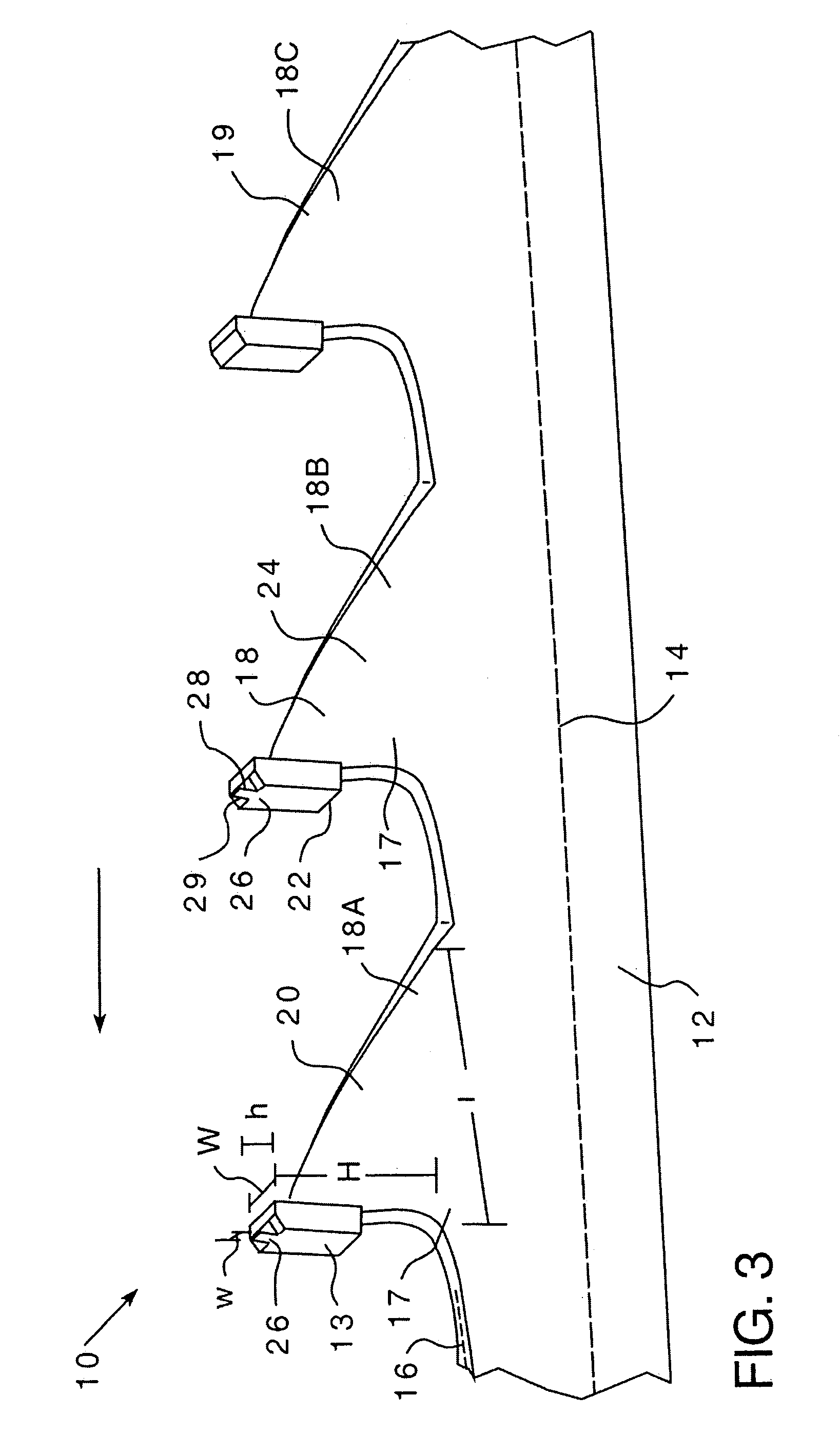Bandsaw blade with cutting extensions
a bandsaw blade and cutting edge technology, applied in the field of bandsaw blades, can solve the problems of bandsaw blade wear, exhaustion of the useful life of the cutting edge, and disadvantages in the distribution of cutting load
- Summary
- Abstract
- Description
- Claims
- Application Information
AI Technical Summary
Benefits of technology
Problems solved by technology
Method used
Image
Examples
Embodiment Construction
[0035]As shown in FIG. 3 a bandsaw blade 10 includes an elongated body 12 having a longitudinal axis 14, a center line 16, and a plurality of unset teeth 18 extending therefrom. The bandsaw blade 10 travels in a cutting path indicated by the arrow. As will be described fully below, the teeth 18A, 18B are disposed in repeating groups along the elongated body 12. The bandsaw body 12 is, typically, made from a metal such as steel. A carbide tip 13 having a cutting edge is usually attached to the bandsaw body 12 at the end of each tooth. However, as the bandsaw body 12 may have integral cutting edge, the carbide tip 13 shall hereinafter be described as part of a tooth body 20. Each tooth body 20 extends from the blade body 12. Each tooth body 20 has a height, identified by the letter “H”, a length, “L” and a width “W”. The tooth body 20 height and width are shown more clearly in FIGS. 6A–6C, described below. A tooth 18A, 18B is preferably between about 0.05 and 0.20 inches wide. The wid...
PUM
| Property | Measurement | Unit |
|---|---|---|
| Width | aaaaa | aaaaa |
Abstract
Description
Claims
Application Information
 Login to View More
Login to View More - R&D
- Intellectual Property
- Life Sciences
- Materials
- Tech Scout
- Unparalleled Data Quality
- Higher Quality Content
- 60% Fewer Hallucinations
Browse by: Latest US Patents, China's latest patents, Technical Efficacy Thesaurus, Application Domain, Technology Topic, Popular Technical Reports.
© 2025 PatSnap. All rights reserved.Legal|Privacy policy|Modern Slavery Act Transparency Statement|Sitemap|About US| Contact US: help@patsnap.com



